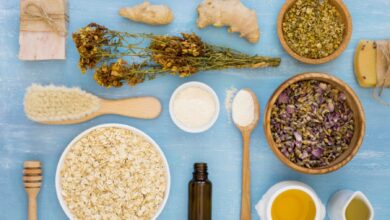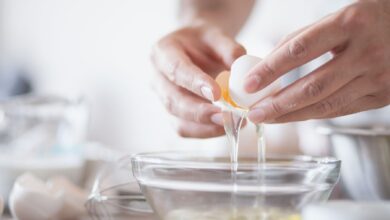ديسمبر 19, 2024
كيفية التخلص من تساقط الشعر: أفضل النصائح والعلاجات الطبيعية والطبية
تساقط الشعر مشكلة شائعة تؤثر على ملايين الأشخاص حول العالم. يمكن أن يكون مزعجًا ومسببًا للقلق إذا لم يُعالج في…
ديسمبر 16, 2024
فوائد بياض البيض للبشرة: سر الجمال الطبيعي
العناية بالبشرة تُعد من أهم أولويات الجمال، وبياض البيض من المكونات الطبيعية التي أثبتت فعاليتها في تحسين صحة البشرة وجمالها.…
ديسمبر 23, 2024
وصفات طبيعية لتقشير الوجه والجسم: سر البشرة الناعمة والمشرقة
التقشير هو أحد الخطوات الأساسية للعناية بالبشرة، حيث يزيل الخلايا الميتة ويجدد الجلد، مما يترك البشرة ناعمة ومشرقة. في هذا…
أكتوبر 13, 2024
نصائح لتقوية العلاقة بين الأزواج: دليل للسعادة الزوجية
الحياة الزوجية تحتاج إلى التفاهم، الحب، والاحترام للحفاظ على علاقة متينة ومستقرة. إذا كنت تبحث عن طرق لتقوية علاقتك الزوجية،…
منذ 4 أسابيع
نصائح للعناية بالبشرة الجافة: دليل شامل للحصول على بشرة ناعمة ومتألقة
البشرة الجافة قد تكون تحديًا يوميًا للكثيرين، خاصةً في فصول الشتاء القاسية أو في البيئات الجافة. إذا كنت تبحث عن…
أكتوبر 30, 2024
نصائح لتقوية جهاز المناعة: دليل شامل للحفاظ على الصحة
يعتبر جهاز المناعة الحصن المنيع الذي يحمي الجسم من الأمراض والعدوى. مع تزايد التحديات الصحية، أصبح تعزيز جهاز المناعة أمرًا…
ديسمبر 1, 2024
نصائح لخسارة الوزن بطريقة صحية
إن فقدان الوزن بشكل صحي يتطلب التوازن بين النظام الغذائي والنشاط البدني مع التركيز على تغييرات مستدامة في نمط الحياة.…
ديسمبر 16, 2024
كيف أخسر وزني بسرعة: نصائح فعالة وآمنة
يرغب الكثيرون في فقدان الوزن بسرعة لتحقيق أهداف صحية أو مناسبة خاصة. لكن من الضروري اتباع طرق آمنة ومستدامة لتحقيق…








